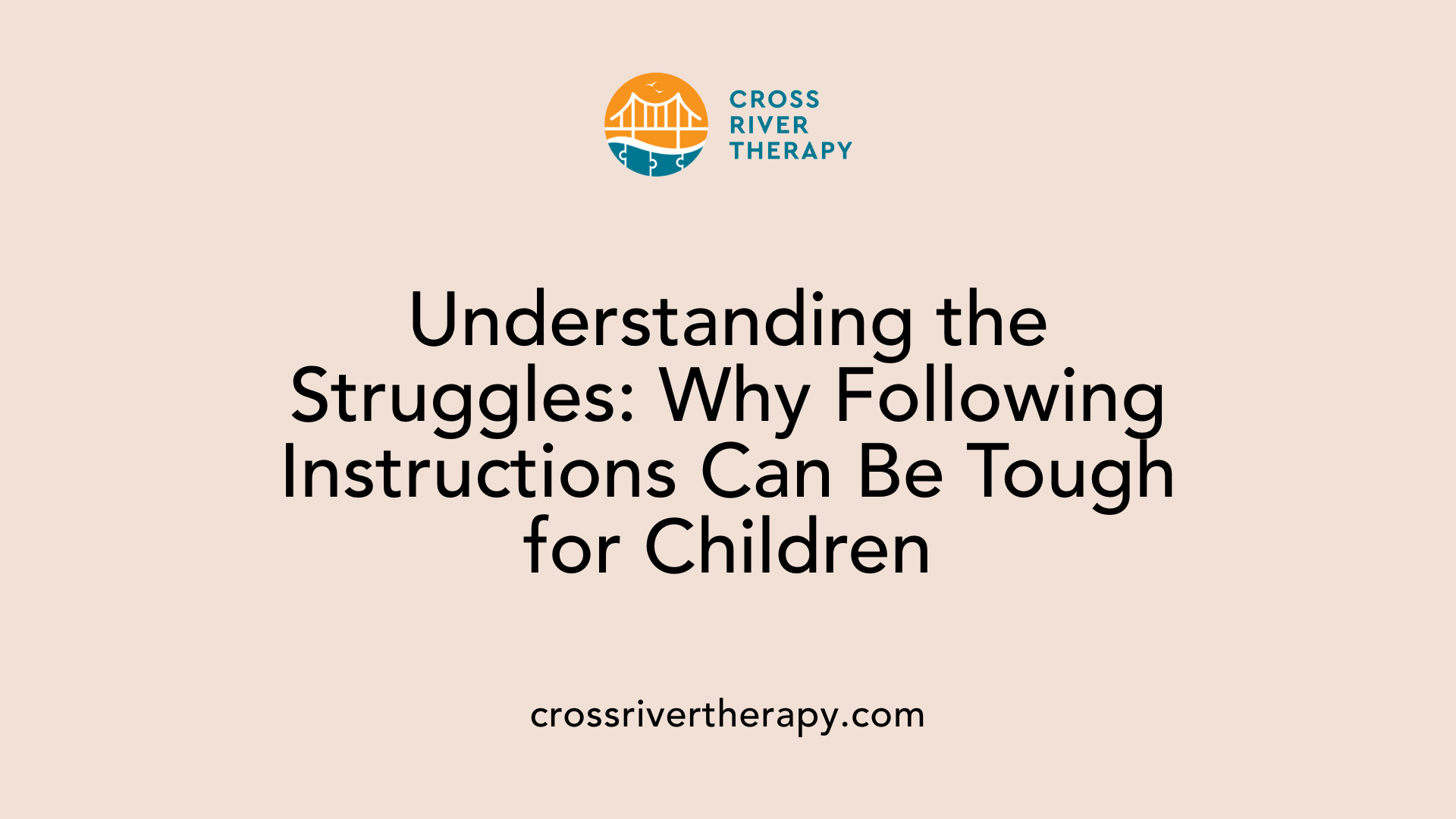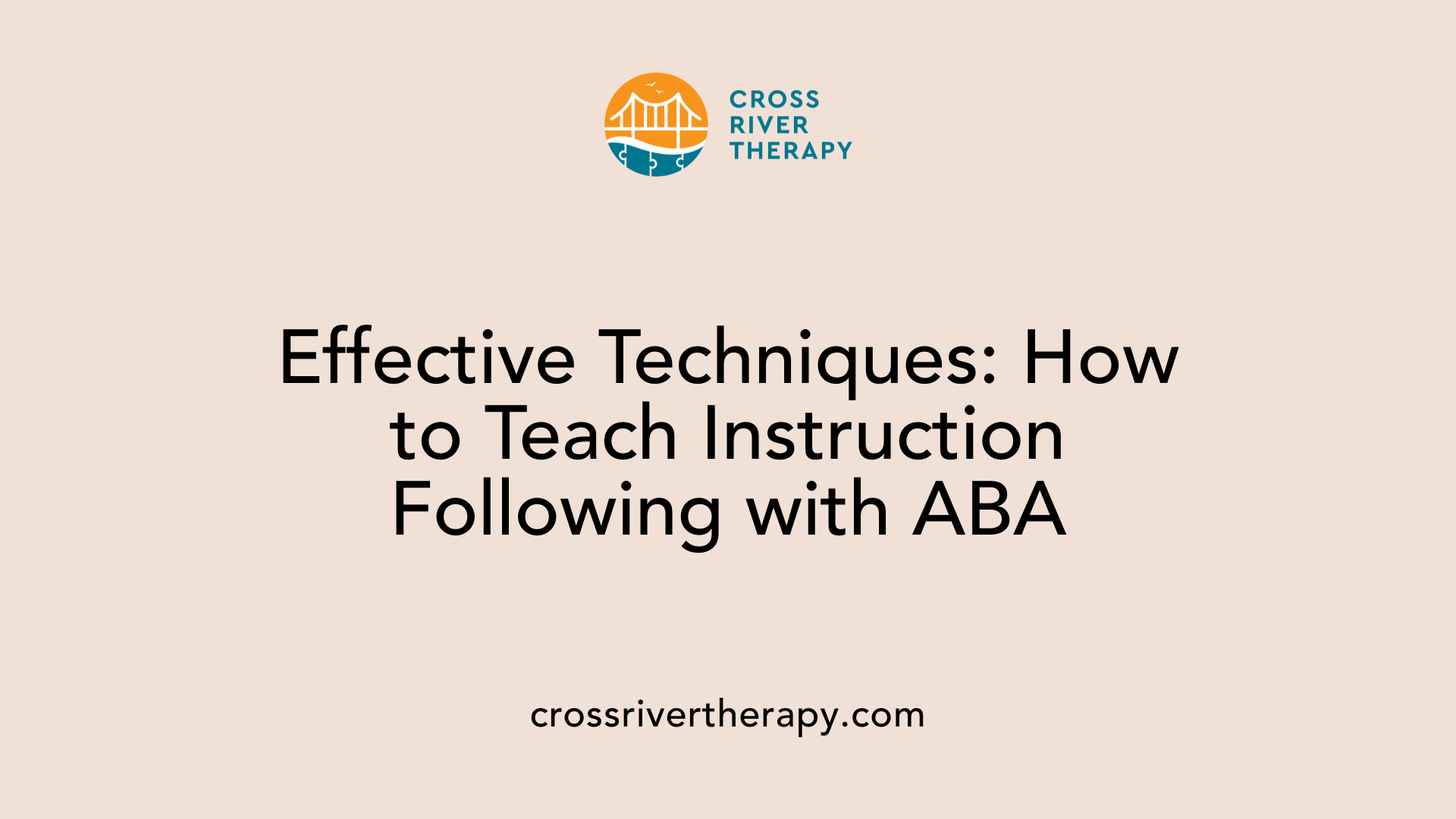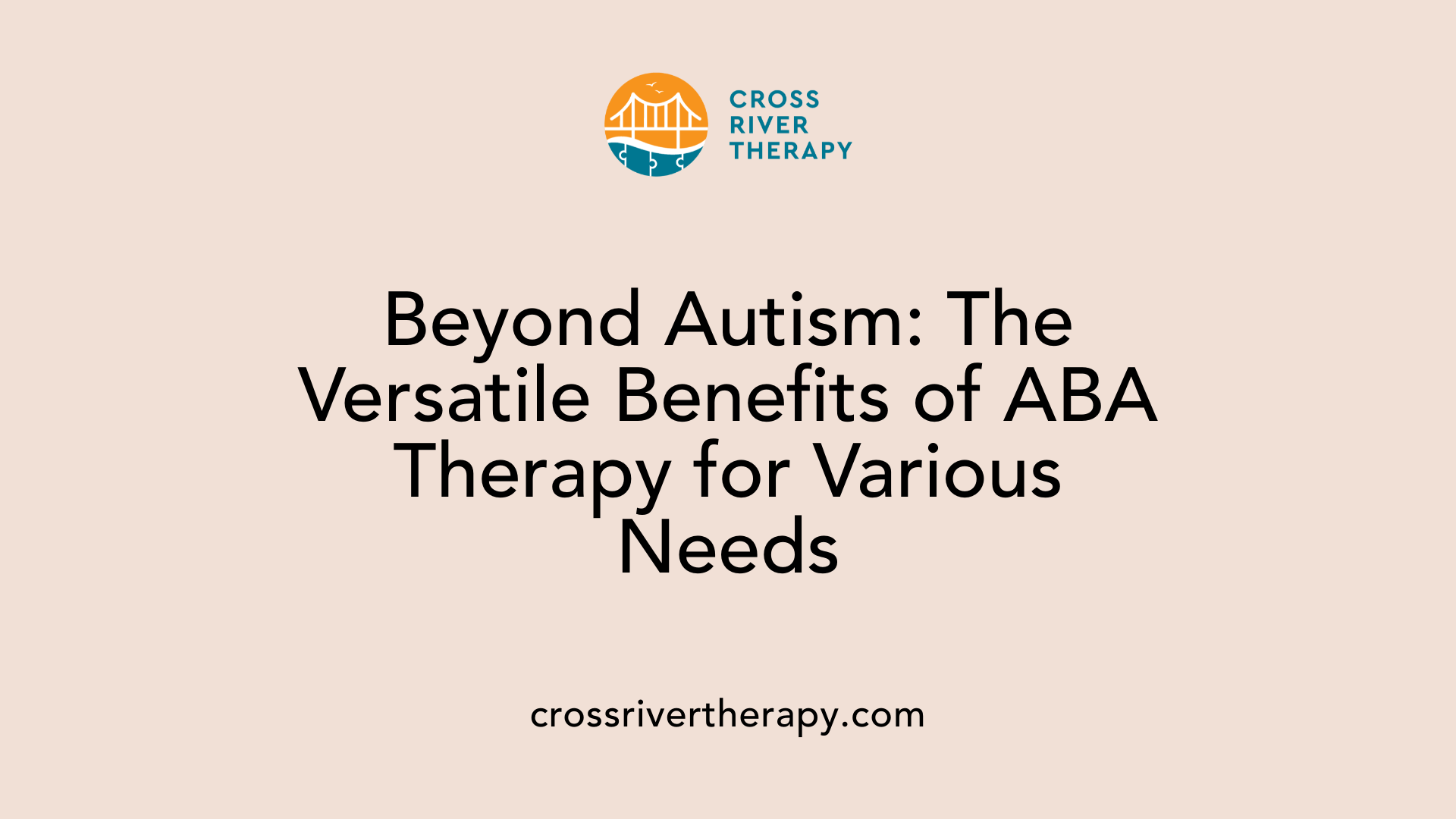How ABA Therapy Teaches Children to Follow Instructions
Utilizing Applied Behavior Analysis to Enhance Instruction-Following Skills
Understanding ABA Therapy
Applied Behavior Analysis (ABA) is a structured therapeutic approach that helps children, particularly those with developmental challenges, learn to follow instructions efficiently. By employing techniques such as modeling, visual supports, and positive reinforcement, ABA therapy provides structured methods to enhance children's ability to process and comply with directives. This article delves into how ABA therapy addresses the unique challenges faced by children in following instructions, focusing on practical strategies and insights for applying these techniques at home or in educational settings.
Challenges in Following Instructions and ABA Solutions

Understanding Why Children Struggle with Following Instructions
Children often encounter difficulties with following instructions due to a range of factors. For those with autism, specific challenges include:
- Language Processing Issues: Kids may not fully understand verbal commands which can lead to confusion.
- Sensory Sensitivities: Overwhelming environments can hinder a child's ability to focus and respond to instructions.
- Motivation: If a child lacks interest in an activity, they might not follow through.
- Delayed Receptive Language Skills: Some children process information slower, affecting their ability to respond during interactions.
These issues can result in frustration and disruptions in learning, making targeted intervention crucial.
How Does ABA Therapy Help Children Follow Instructions?
ABA therapy effectively addresses these challenges with structured interventions. It helps children follow instructions by:
- Breaking Down Tasks: Instructions are simplified into manageable steps, which make them easier to understand. For instance, rather than saying "Go to the kitchen and bring the water bottle," a direct command like "Get the water bottle" is used.
- Positive Reinforcement: Children receive immediate praise or rewards when they successfully follow a direction. This encourages them to repeat the behavior.
- Using Visual Supports: Tools like picture schedules and checklists aid comprehension by providing visual cues alongside verbal instructions.
- Modeling Techniques: Therapists demonstrate tasks before asking children to replicate them, facilitating clearer understanding and execution.
By fostering an adaptive learning environment and applying these strategies, ABA therapy supports children in gradually improving their ability to follow instructions.
Key ABA Techniques for Teaching Instruction Following

What Techniques are Used for Teaching?
Applied Behavior Analysis (ABA) employs several structured techniques to facilitate teaching children how to follow instructions effectively. Some primary methods include:
Modeling: Therapists demonstrate the desired behavior or action first. For example, a therapist might show how to ‘put on shoes’ before expecting the child to do it themselves. This visual representation aids in understanding.
Visual Supports: Tools like picture schedules, checklists, and visual cues can greatly benefit children in comprehending instructions. For instance, a ‘first-then’ board may clarify the sequence of tasks, making the instructions more accessible.
Physical Prompts: Gentle and non-aggressive assistance can help children respond to instructions. An example could be guiding a child's hand toward an item when asked to ‘pass the scissors.’ This helps them make the desired connection with the instruction.
Task Breakdown: Complex tasks are broken down into manageable steps. Children can start with simple one-step instructions like ‘pass me the water’ and gradually progress to more complex sequences.
These techniques not only aid in improving instruction-following skills but also build confidence, making children more adept in various settings.
How are Reinforcement and Choices Utilized?
Incorporating positive reinforcement is essential. Praise or rewards for successful task completion motivates children to repeat the behavior. Alongside, offering choices within instructions, such as ‘do you want to do Math or English first?’, empowers children, promoting their engagement and compliance with directives.
Practical Strategies for Implementing ABA at Home

How can I teach an autistic child to follow instructions?
Teaching an autistic child to follow instructions can significantly benefit from a structured and gradual approach. Start by providing clear and simple directions. Keeping instructions brief, such as ‘Pass me the scissors,’ allows the child to focus on one task without feeling overwhelmed. This stepwise progression is vital in building their confidence.
Steps for gradual instruction complexity
Begin with one-step instructions. Once the child masters these, gradually introduce two-step instructions, ensuring not to pair the same commands consistently. For example, you might say, ‘Get your notebook, then sit down.’ This variety helps the child adapt to different directives.
Incorporate visual supports like checklists or picture schedules. Visual aids make it easier for children to comprehend tasks and expectations. Utilize motivational techniques by linking instruction completion to enjoyable activities—if following an instruction brings them closer to a desired outcome, they are more likely to comply.
Using motivation and positive reinforcement at home
Positive reinforcement plays a crucial role in encouraging compliance. After the child successfully follows an instruction, offer immediate praise or rewards. This not only reinforces the behavior but also encourages them to seek out similar successful actions in the future.
Additionally, empower your child by providing them choices in tasks. For instance, allow them to choose between doing math or English first. This sense of control reduces resistance and promotes active participation. By maintaining a consistent routine and being patient, you'll foster an environment conducive to learning and following instructions effectively.
ABA's Broader Impact Beyond Autism

Is ABA therapy only for autism?
ABA therapy is not limited to autism; it proves effective for a variety of behavioral and developmental issues in both children and adults. For example, conditions such as attention-deficit/hyperactivity disorder (ADHD) and obsessive-compulsive disorder (OCD) can benefit from ABA techniques.
This therapeutic approach centers on promoting positive behaviors while managing cognitive disorders or behavioral challenges. Historically linked with autism spectrum disorder, ABA is increasingly recognized as an evidence-based treatment across diverse settings like education and even substance abuse recovery.
What are the behavioral and developmental benefits of ABA?
The benefits of ABA therapy extend beyond simply addressing autism. Here are some key attributes:
- Skill Development: ABA helps individuals develop functional communication, social skills, and academic abilities.
- Behavioral Modification: It uses positive reinforcement strategies to enhance desired behaviors while reducing undesirable ones.
- Adaptive Functioning: The therapy encourages individuals to apply these skills in various settings, fostering independence and adaptability.
- Evidence-Based: Research supports the application of ABA in numerous contexts, confirming its efficacy in improving quality of life for those with different challenges.
| Benefit | Description | Target Population |
|---|---|---|
| Skill Development | Teaches essential life and academic skills | Children and adults |
| Behavioral Modification | Encourages positive behavior through reinforcement | Individuals with behavioral issues |
| Adaptive Functioning | Generalizes skills across environments | Those with developmental challenges |
| Evidence-Based Practice | Supported by research across various domains | Broad spectrum of behavioral concerns |
In summary, ABA therapy has a wide-reaching impact, equipping individuals with the tools needed for a more independent and fulfilling life, regardless of their primary diagnosis.
Ensuring Safe and Effective ABA Implementation

Is ABA therapy harmful?
ABA therapy is generally regarded as safe and effective when implemented by trained professionals, offering structured methods that help children with autism navigate everyday challenges. However, its reputation isn't without controversy. Critics have raised concerns about historical practices that utilized harsh techniques, leading to potential emotional harm, such as anxiety or diminished self-esteem. Such issues commonly arise if therapy overly emphasizes conformity to neurotypical behaviors, creating pressures that may not suit every individual.
Proponents of ABA emphasize its focus on empowerment and fostering independence among children, offering a more positive foundation for social interactions and daily functioning. Nonetheless, the concerns regarding intensity and repetitiveness remain. Some argue that such an approach can lead to masking behaviors—where children suppress their true selves to meet perceived societal norms—potentially resulting in long-term psychological implications.
How ABA is safely applied
For ABA therapies to be effective and safe, it is essential to tailor methods to the individual’s unique needs. Techniques like visual supports, positive reinforcement, and modeling are integral, promoting clear communication and understanding without resorting to harsh practices. When parents and therapists collaborate, ensuring consistency at home and in therapy sessions, they can build a supportive environment where the child feels secure.
It’s important to regularly monitor progress and adapt techniques to maintain a balance between building skills and respecting the child’s individuality. By ensuring that all interventions are compassionate and respect the child’s pace, ABA can be a valuable tool in fostering essential life skills.
Concluding Thoughts on ABA and Instruction Following
ABA therapy presents a structured and effective approach to helping children, especially those with developmental challenges, in learning to follow instructions. By employing key techniques such as modeling, positive reinforcement, and breaking down tasks, ABA not only aids in instruction following but also supports broader behavioral and developmental goals. When implemented sensitively and correctly, this therapy can provide invaluable skills that enhance a child's everyday life, fostering both independence and confidence.
References
- How ABA Therapy Improves Children's Ability to Follow Instructions
- Following Through with Instruction - How to ABA
- How to Teach 1-Step Instructions Using ABA
- Using ABA: Teach Your Child to Listen & Follow Instructions
- How to Help Your Child Follow Directions: 7 ABA-Based Tips for ...
- Social Skills Series: Teach Kids To Follow Directions
- Positive behaviour for autistic children and teenagers
- Autism: understanding behaviour | Raising Children Network
- Challenging behaviour: autistic children and teenagers



